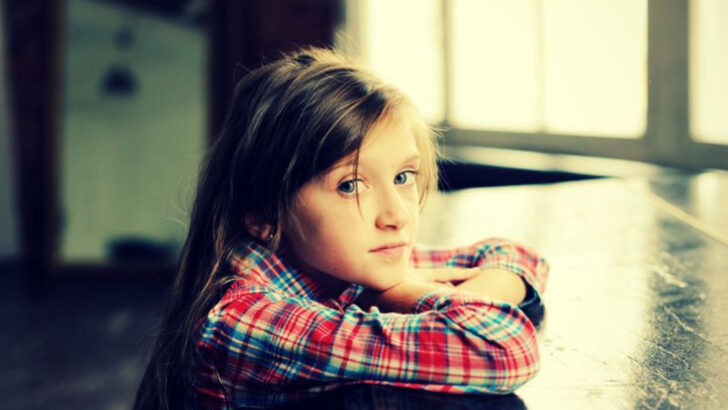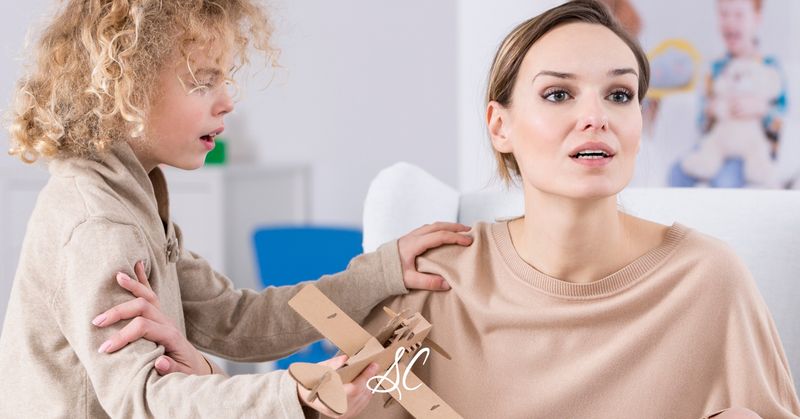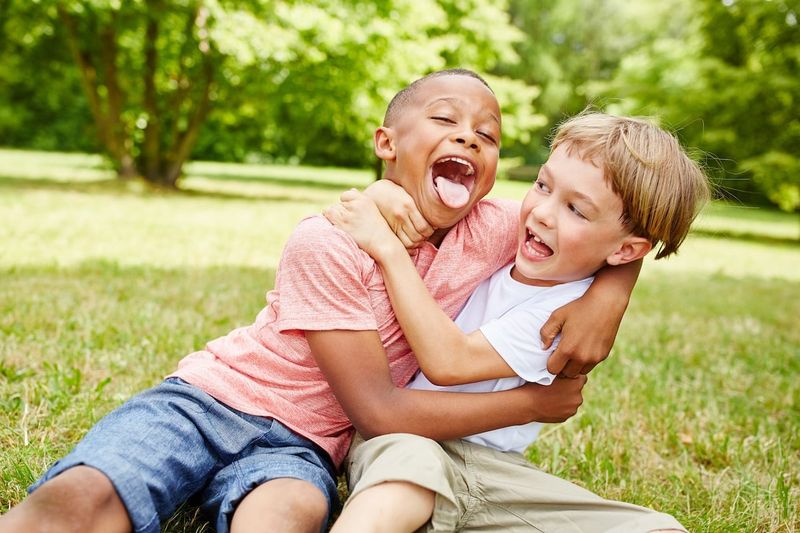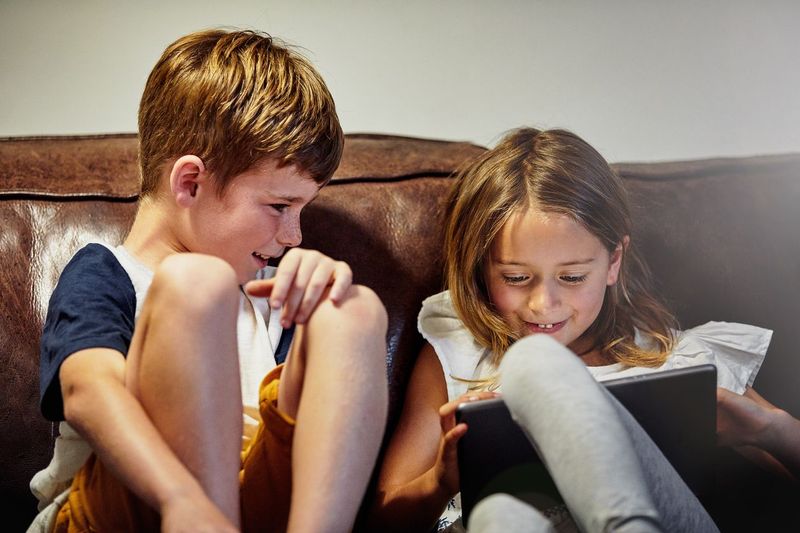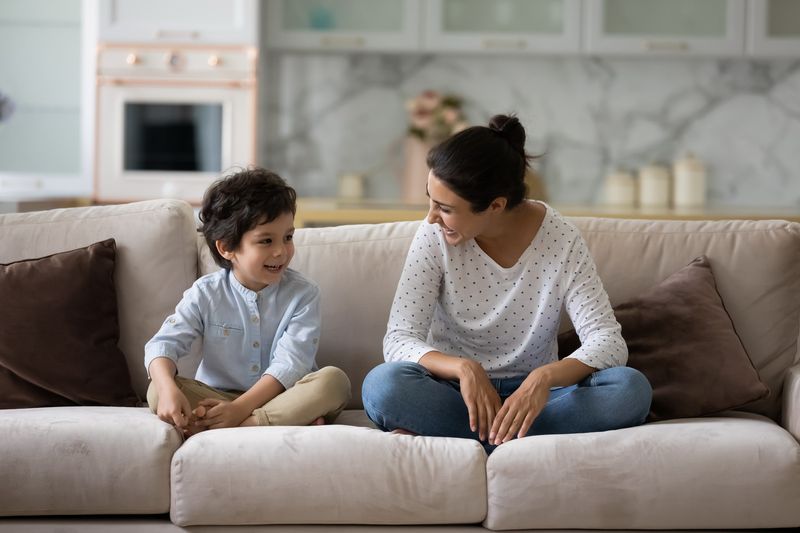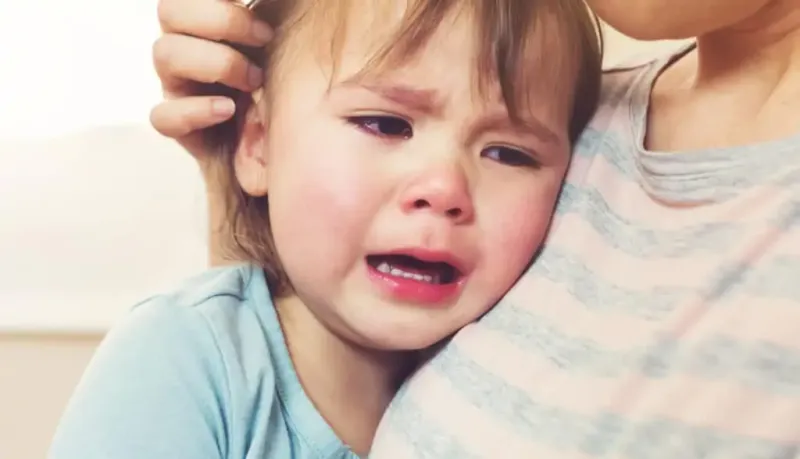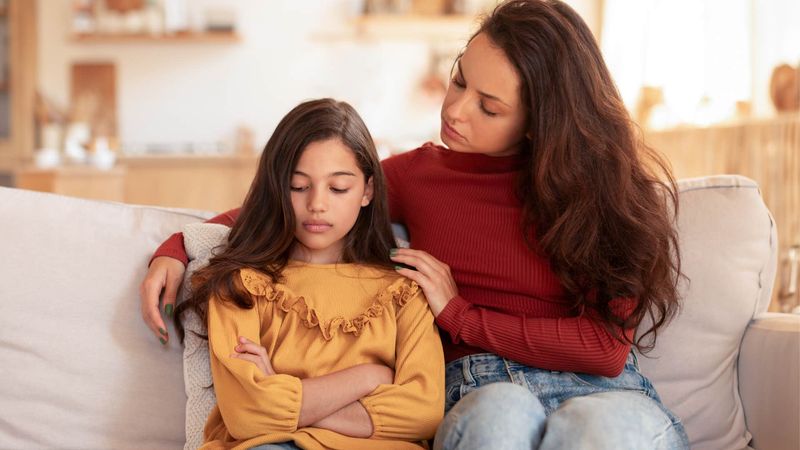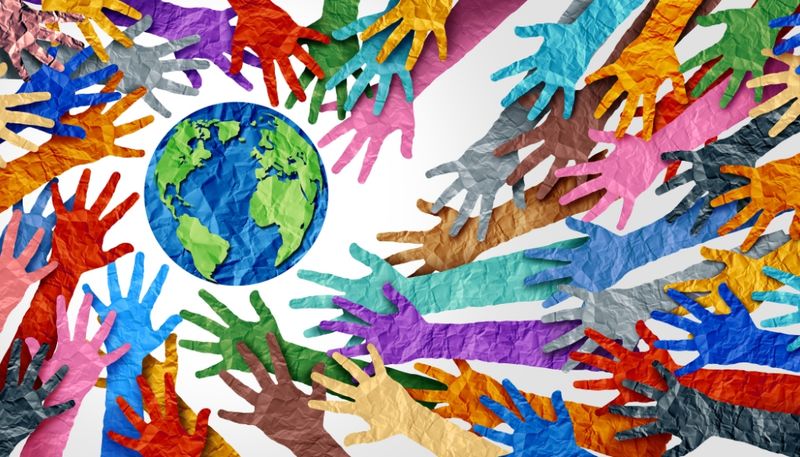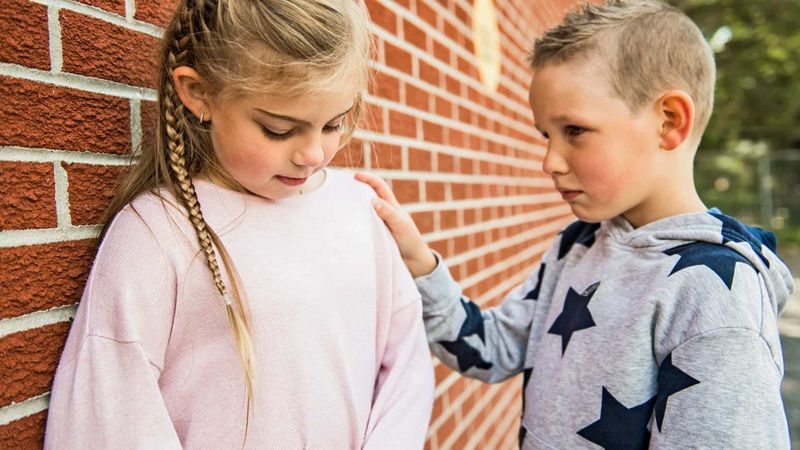We all want to raise emotionally intelligent kids. The ones who are kind, considerate, and know when to say “no” with confidence. But empathy and boundaries don’t just magically appear—they’re learned. Modeled. Repeated.
And sometimes… they’re missing in action. If your child seems to bulldoze through other people’s feelings—or gets swallowed whole by theirs—don’t panic. This isn’t about shame. It’s about noticing the signs, getting curious, and helping them grow.
Aqui estão 18 clear signals your child may be struggling with empathy or personal boundaries—and how you can help guide them with compassion, not control.
1. Interrupts Like It’s a Superpower
Honestly, if there were trophies for interrupting, my kid would have a shelf full. It’s like they’re on a mission to finish your sentence—except you never finish one. You see it when they bulldoze through conversations, totally oblivious to eye rolls or that desperate little sigh adults make when they want to talk.
Sometimes, it’s just excitement bubbling over. But when ignoring others’ reactions becomes the norm, it might be a sign that social cues are flying right over their head.
Noticing when people look upset or bored, and learning to pause, are skills worth developing. I remind my child (and myself) that conversations are a two-way street. It’s not about perfection—just being aware that their words matter, but so do everyone else’s.
2. Personal Space? What’s That?
Nothing says ‘I love you’ like a spontaneous bear hug, right? Except when your kid’s affection steamrolls over personal space, leaving their friends stiff as boards. They might squeeze, poke, or flop into someone’s lap without a second thought.
While their heart is in the right place, those social boundaries get fuzzy. If your child ignores “no,” or doesn’t notice when someone pulls away, it’s time to talk about reading people’s body language.
I try to model asking before touching and gently point out when someone seems uncomfortable. We practice respecting when others say “stop.” Turns out, being sweet also means knowing when to hit pause. It’s not an easy lesson, but it’s a game-changer for healthy friendships.
3. The Sticky Fingers Phase
Let’s talk about that ‘help yourself’ attitude. If your child goes straight for someone else’s snack, toy, or even your phone, it’s not just adorable curiosity. It’s a red flag that personal boundaries need some serious airtime.
Kids are naturally curious and impulsive, but repeatedly taking things without asking? That calls for some real talk about respect. I caught my child once rooting through my purse like it was a treasure chest—cute, but also, hey, not yours!
Teaching them to pause and ask, rather than grab, builds both empathy and trust. A simple script—“Can I have one?”—can go a long way. And honestly, it stops a lot of snacktime drama.
4. Sharing: Not Just About Toys
Some kids are so charming—until sharing comes up. Suddenly, it’s like their sibling or friend has asked for a kidney, not a turn. If your child always needs to win, hogs the spotlight, or can’t handle letting others play, empathy might be stuck in neutral.
It’s not just about toys. It’s about sharing time, attention, and even the chance to talk in a group. Sometimes, I see this at birthday parties—one kid soaking up all the air in the room.
Nós work on pausing, noticing others’ feelings, and practicing the art of “your turn, my turn.” It’s equal parts exhausting and rewarding. Sharing isn’t just a lesson for toddlers—it’s a lifelong skill.
5. Laughing When It Hurts
Não há nada como your child laughing at the exact wrong moment—like when someone else trips or bursts into tears. Sometimes it’s nerves, sometimes it’s just not getting the weight of the situation.
I remember cringing as my child laughed when a friend started crying. Embarrassing, but it happens. Kids don’t always know what to do with big emotions, especially if they feel awkward or out of place.
Instead of scolding, I try to ask, “How do you think they felt?” and show empathy myself. Modeling compassion helps them see that laughter isn’t always the right response. It takes time, but those ‘oops’ moments are great chances to teach.
6. The ‘It’s Not a Big Deal’ Shrug
When a child brushes off someone’s hurt feelings with a casual “It’s not a big deal,” it can sting. This isn’t just sass—it’s a blind spot in understanding how words can minimize someone else’s pain.
My own child once told a friend to “get over it” after a playground squabble. Ouch. These throwaway comments can shut someone down fast.
I’ve learned to pause the moment and ask, “How do you think that made them feel?” It’s not about guilt-tripping. It’s about helping them see that their reactions matter, and some things really are a big deal—even if it’s not big to them.
7. Rough-and-Tumble Turns Sour
Play fighting is all fun and games—until it’s not. Some kids just don’t notice when their buddy’s laugh turns into a wince. If your child keeps roughhousing when others are clearly done, that’s a sign those empathy muscles need a workout.
I’ve witnessed my kid tickling a friend into tears, missing the signals that it stopped being fun. These moments are cringe-worthy but important.
We talk (a lot) about stopping when someone says “enough,” and why paying attention to faces and voices matters. It’s not about shutting down the energy. It’s about knowing where the line is—and respecting it.
8. Sorry, Not Sorry
If apologizing is like pulling teeth, you’re not alone. Some kids freeze up or toss out the world’s most robotic “sorry” just to get it over with. Genuine apologies mean your child understands why they hurt someone—not just that they got in trouble.
I’ve seen my child mutter ‘sorry’ under their breath, eyes darting away, just to check the box. We work on connecting actions to feelings, even if it’s awkward at first.
Sometimes, we practice with stuffed animals or act out little scenes. The goal isn’t a perfect apology, but a real one—one that says “I care how you feel.”
9. My Way or the Highway
Some kids are born negotiators—others come with a tiny dictator vibe. If every game, outing, or conversation has to go their way, it’s a sign they’re wrestling with compromise.
My child once tried to rewrite the rules to Monopoly mid-game when losing. It was epic… and exhausting. Reluctance to see others’ ideas as valid means empathy still has room to grow.
Teaching compromise doesn’t mean giving up. It’s about learning to share the driver’s seat. We celebrate small wins—like letting someone else pick the movie. Baby steps, big impact.
10. Master of Excuses
Does your kid have an answer for everything? Mine could win gold in the Olympic sport of ‘it wasn’t my fault.’ When being wrong feels like a personal attack, empathy takes a back seat to self-protection.
They’ll blame, justify, or over-explain until you’re dizzy. It’s not about being sneaky—it’s often fear of disappointment or not understanding how their actions affect others.
I focus on staying calm, modeling accountability, and rewarding honest reflection. Admitting mistakes is tough, but it’s the first step toward empathy and stronger boundaries.
11. Meltdowns at “No”
Saying ‘no’ shouldn’t set off a fireworks display—but for some kids, it does. If your child reacts to limits with full-body meltdowns, it’s a clue that boundaries aren’t sticking yet.
I’ve navigated many a storm after saying “no more screen time.” The aftermath isn’t pretty—crying, stomping, and sometimes guilt trips. It’s exhausting for everyone.
Reminding them that everyone gets to have boundaries (even parents) helps. We practice hearing “no” and handling it without a Broadway production. Progress is possible, one calm ‘no’ at a time.
12. Social Cluelessness
It’s heartbreaking when your child misses those subtle social cues—like not noticing a lonely kid at the party. Sometimes, it’s as if their radar is just set to a different channel.
I’ve watched my child walk right by a crying friend, totally oblivious. It’s not coldness—just a skill that needs building.
We use gentle questions: “Did you see how Jamie was feeling?” or “What can we do?” It helps to notice others’ moods and step outside their own experience. A little curiosity goes a long way in growing empathy.
13. Emotional Blackmail Junior Edition
Kids are creative—sometimes a little too creative with guilt trips. If your child says things like, “You don’t love me if you say no,” it’s time to work on emotional honesty and boundaries.
I’ve heard every dramatic line in the book. It’s tempting to give in, but that only blurs the lines of what’s okay.
Teaching them to use words for their feelings (and not as manipulation) matters. I remind my child that love isn’t measured by getting their way—and saying “no” is part of healthy relationships.
14. People-Pleasing Overdrive
Some kids bend over backward to keep everyone happy. People-pleasing looks sweet, but it can mean shaky boundaries and a need for constant approval.
I saw my child spend an entire playdate fixing everyone else’s problems—never asking for help herself. Underneath, it’s about wanting to be liked or fearing someone might be upset.
We talk about how helping is wonderful, but it’s okay to take care of yourself too. Learning to say “no” and let others handle their stuff is healthy—and it builds confidence, not just kindness.
15. Different is Dangerous?
If your child insists their way is the only way, or other opinions are just ‘wrong,’ it might be time to work on emotional flexibility. Empathy means seeing the world through more than one lens.
I’ve watched arguments escalate when my child wouldn’t budge, even over little things like which crayon is best. It’s about feeling threatened by difference—not being mean.
We read stories with characters who disagree and talk about why it’s okay to feel differently. It takes practice, but learning to accept other perspectives is key to navigating friendships and life.
16. Making It All About Them
Ever notice how your child’s feelings seem to fill the whole house? If someone else is sad and your kid swoops in—then needs all the comfort themselves—self-focus might be crowding out empathy.
I caught my child turning a sibling’s tough day into a spotlight moment. Not malicious, just not balanced.
We practice listening and letting others have their feelings. Sometimes, the best support is just being there—not making it about you. Empathy grows when kids learn their turn to be comforted will come, too.
17. Empathy: Here One Minute, Gone the Next
If your child is kind and considerate one day, but totally tunes out another’s feelings the next, you’re not alone. Consistency is tough, and empathy takes practice.
I’ve been amazed by a sweet gesture at breakfast, only to see a meltdown over sharing at lunch. It doesn’t mean they’re hopeless—it means they need reminders and real-life examples.
We celebrate the moments they ‘get it’ and gently unpack when they miss the mark. Empathy is a journey, not a checklist. Every stumble is an invitation to grow, together.

